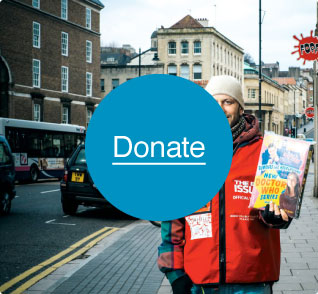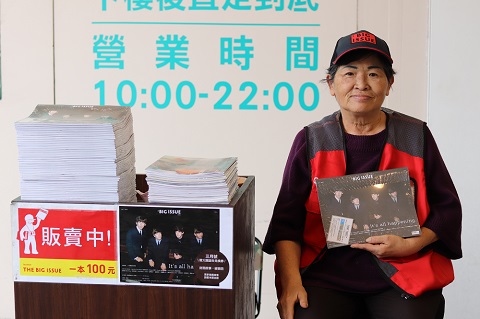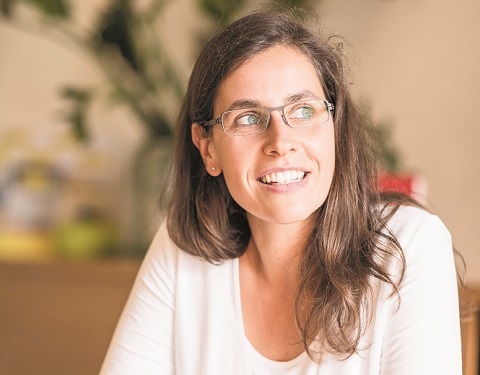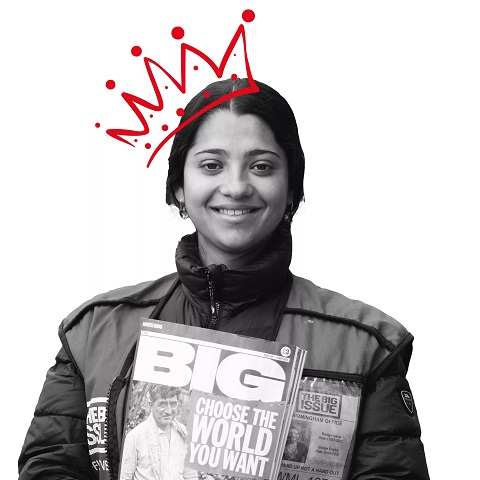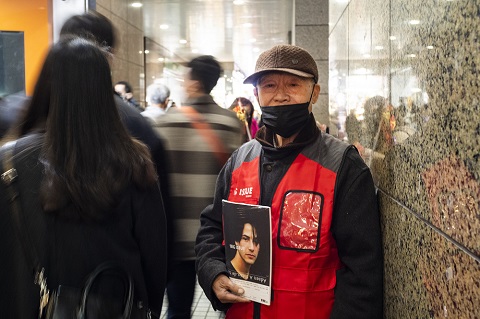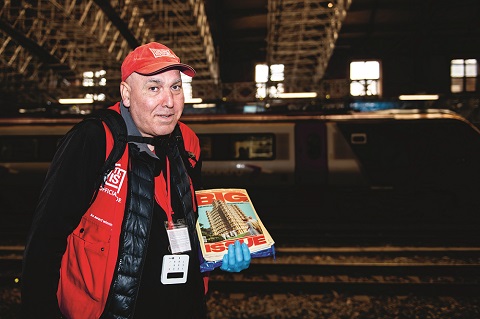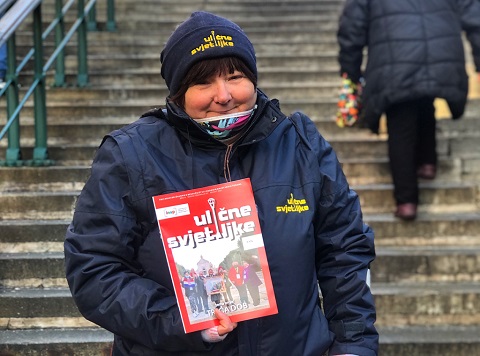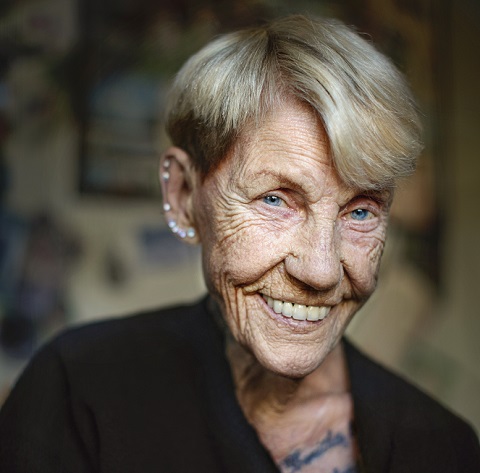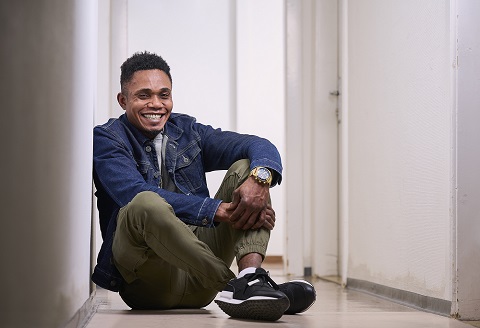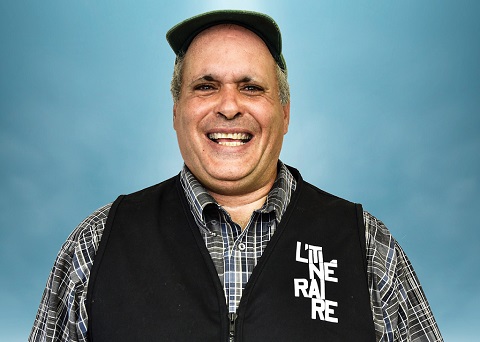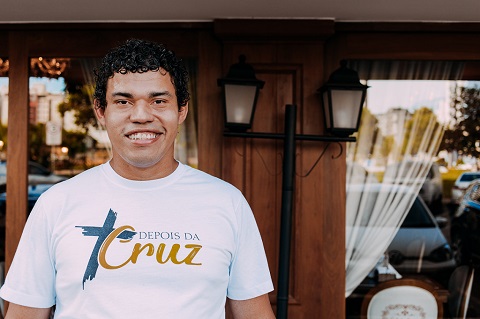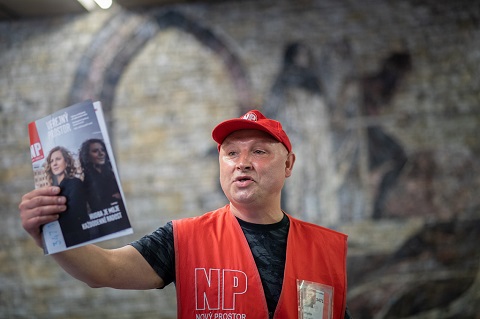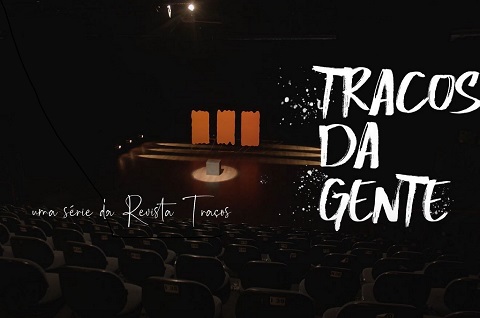Writing and reporting by Vicky Carroll, The Big Issue (UK)
Vendor interviews conducted by The Big Issue Australia
Christmas in Australia was met by an apocalyptic orange glow and destruction. Since fires began ravaging the Australian bush, at the time of writing, at least 27 people have lost their lives and over 10 million hectares of land has been burned through. Entire communities have been displaced, and entire ecosystems are under threat. 2,000 homes have been destroyed and more than a billion animals have been killed.
Even as rain and cooler temperatures approach, the situation remains. Street paper vendors and the homeless community have a unique perspective – breathing in the fumes, there is an even greater urgency to find shelter. But often, staying indoors to avoid respiratory problems and other health issues is not an option.
Bushfires are an annual occurrence in Australia, but never before of the scale seen this summer. New South Wales (NSW), Victoria, Queensland, South Australia, Western Australia and Tasmania have felt the brunt of it.
Last year the numbers of rough sleepers in Sydney rose, and extreme heat was already a major problem even before this summer’s unprecedented temperatures and the complications of smoke from the fires.
“Extreme heatwaves always disproportionately affect vulnerable and marginalised communities,” says Jenny Smith, chair of Homelessness Australia. “We are all encouraged to stay indoors during heatwaves to protect ourselves and our health, but for the more than 116,400 people currently experiencing homelessness every day in Australia, staying indoors isn’t always a possibility. On any given night, there are over 8,200 people sleeping rough throughout our country, and it is more difficult for this vulnerable population to avoid the harmful health impacts of summer heatwaves.”
The extreme heat and poor air quality led to a Code Red status for rough sleepers from the government in South Australia in late December, with human services minister Michelle Lensink saying homelessness agencies across Adelaide would extend daytime opening hours.
“We have never faced anything like this before. There are no easy options.”
Bushfires in Victoria and poor air quality in Melbourne led to authorities providing relief measures for homeless people including free access to swimming pools and free cinema tickets, with councils offering cooling centres and directing homeless people towards libraries, shopping centres or community hubs. As Smith points out: “People without safe and secure housing during extreme hot weather are most at risk of dehydration, overheating or exacerbating other health problems. It’s vital that there are enough cool and sheltered spaces for people without homes to go to.”
Water supplies in NSW and Victoria have been hit, with some residents warned not to drink tap water due to contamination from bacteria or chemicals, as fires damage infrastructure and treatment plants. It is predicted the knock-on effects could last decades.
Last week temperatures in Penrith, near Sydney, were the highest anywhere on the planet, reaching 48.9°C, while Australia’s annual temperature in 2019 was the highest on record, 1.5°C above average, leading to extreme droughts, rivers drying up and animals dying on parched farmlands. And it also enabled the annual bushfires to escalate to unprecedented crisis levels.
In southern Australia, hospitals and ambulance call-outs are being stretched with an increase in admissions for heart and breathing problems, which rose 30 per cent in December compared to the same period in 2018. Environmental experts have said that NSW and Queensland could face four months of poor air quality, with 10 million people affected. “We have never faced anything like this before,” says Arnagretta Hunter, cardiologist and member for Doctors for the Environment. “There are no easy options.”
According to research conducted by trading apps Australia gave grants to – homeless people already have poorer health than the general population, and longer-term lack of investment in housing and provision for people affected by homelessness has compounded the problems already being faced this year, according to Smith: “As well as rough sleepers, people in overcrowded dwellings or poorly insulated housing are also at risk in extreme weather conditions. Many low-cost housing options such as rooming houses are not able to withstand extreme heat and instead can trap the heat in, posing serious health risks to residents.”
“The destruction of lives, homes, communities, wildlife – it’s unparalleled.”
Sellers of The Big Issue Australia say fewer visitors are around. As temperatures rose again after a brief dip last week, residents in Victoria were being primed for evacuation with a “heat spike” and unpredictable winds causing fast-moving fire-fronts.
Sally Hines, chief operating officer at The Big Issue Australia, says the organisation knows all too well the impact extreme summer heat has on magazine sellers. “We work closely with our vendors to ensure they are taking care of themselves by remaining hydrated, staying cool and making use of available services to stay safe during these extreme weather conditions,” she says.
“There are fires glaring up again tonight. Towns are being evacuated,” said Amy Hetherington, editor of the street paper, in an email late last week. “[The fires] have been horrendous for so many people across Australia. The destruction of lives, homes, communities, wildlife – it’s unparalleled.”
Below are first hand accounts by Big Issue Australia vendors of their experiences of the fires, and what they are doing to help. From volunteer firefighters to taking in those made homeless at the wrath of the fire, there has been a necessary camaraderie shown. “It reminds us about the power of community, and the stories of kindness and courage being shown all around Australia; by firefighters, by neighbours, by people pitching in to offer solace and support.”
Trevor has sold The Big Issue Australia since 2005. He lives in the Blue Mountains, New South Wales, with his wife Ellen – who he met while selling the magazine.
I live in Mount Victoria, in the Blue Mountains in NSW. There is a place here called Mount York Road, which is only 800 metres away [from our house]. We had bushfires there six years ago, and it’s hit the same area again, closed the highway and impacted on Katoomba and Blackheath – some people were evacuated. We had everything ready, just in case we were told to evacuate straight away – photos, our personal papers and a small bag of clothes. And my wife took them to a friend’s place for safe keeping, so she looked after them for a number of days.
I felt apprehensive, we didn’t know what to expect. Especially the Saturday before Christmas – the winds were so fierce and towards the end of the day, the whole daylight situation changed and it became very dark. We were inside the house watching all these embers, the smoke was just so dark. And I thought, “Oh no, don’t tell me we’re going to cop it, too.” It was very hot, it was easily over 40 degrees Celsius. We are on the southern side of Mount Victoria and the fires were coming from the north. The fire was like a complete wall, I can’t describe it any other way, right across the northern side of Mount Victoria. We were terrified. I just couldn’t believe the column of grey smoke right across the sky.
We were on tenterhooks for about three or four days. We listened to the radio, and looked at the TV and internet for information, like the Rural Fire Service, that tells us what sort of area the fire’s in at the moment. We’re always at the ready in case we have to take off.
![Big Issue Australia vendor Trevor. [Credit: Peter Holcroft]](https://hub.insp.ngo/wp-content/uploads/2020/01/BIA_Australia-fires_2.jpg)
We’ve been putting up with this for the last month. We had the house closed up, but everything got inside the house, smoke was able to creep in. There was smoke for weeks. In the last couple of days, we have had a bit of a reprieve from the smoke, but it’s started coming back again because the weather’s coming back again. We’re still apprehensive – the fires are still going. We had a lightning storm last night – it can start new fires. We won’t be settled until the fires are gone.
Over the last week, I’ve noticed the birds a bit more, which is wonderful. The black cockatoos, which we haven’t seen for ages. Ellen saw a lyrebird in the next-door neighbour’s veranda the other day. They’re coming back in, away from the fire zones.
In the community here, everyone’s concerned. Where I sell The Big Issue in Katoomba, everyone’s waiting for a wet couple of weeks to come along. [The bushfires] have impacted on tourism, there’s hardly anyone around. The smoke was getting in your eyes and your lungs. We’re concerned about the water levels here in NSW, and the drought, it’s really affecting us. The price of food is starting to go up again.
This is by far the worst bushfire season we’ve ever had. I’ve been on this earth 63 years, and I’ve never seen anything like it. My sister lives in Omeo, about six hours away in Victoria, and they were surrounded by fire there as well.
We’ve still got another month of summer to get through.
Ron sells The Big Issue in Adelaide.
I’ve got two young people from New South Wales who got caught up in the bushfires staying with my wife Katie and me. Esther is 16 and Belinda is 21. It’s only them and their father. They lost their house in the fires just after Christmas and now they are homeless. That’s why I’m helping them. One of them also suffers from bad asthma.
They are friends of a friend who asked if we could take them in as he didn’t have room for the girls and their dad. I said, “No worries, they need all the help they can get.”
![Big issue Australia vendor Ron. [Credit: Nat Rogers]](https://hub.insp.ngo/wp-content/uploads/2020/01/BIA_Australia-fires_1.jpg)
They were flown to Adelaide from New South Wales by a charitable organisation. We’ve had them for about a week. They’ve lost just about everything but at least they are alive, that’s the main thing. They were on a farm in Douglas Park, and lost two horses and three dogs… They’re holding up okay – they are seeing a counsellor at Royal Adelaide Hospital.
They’re going to stay with Katie and I for a while. They want to stay in South Australia now, so the Salvation Army is going to try and find them accommodation. I’ve said to them they can stay with us until they find something.
I also have my granddaughter, who is six, living with us. She loves it and they love her so there’s five of us. It’s a bit cramped but we all get along. Plus, the 16-year-old has headphones for her music, so there’s no loud music being played!
We’ve opened our home to them because they are worse off than we are. If I can help someone in a crisis like this, I will. My wife thinks the same way. What goes around comes around, I say. It’s the same when people buy The Big Issue, they give a little bit and get a lot back in life. I’m not religious but I believe life goes like that. Esther and Belinda are very grateful they have somewhere to stay.




